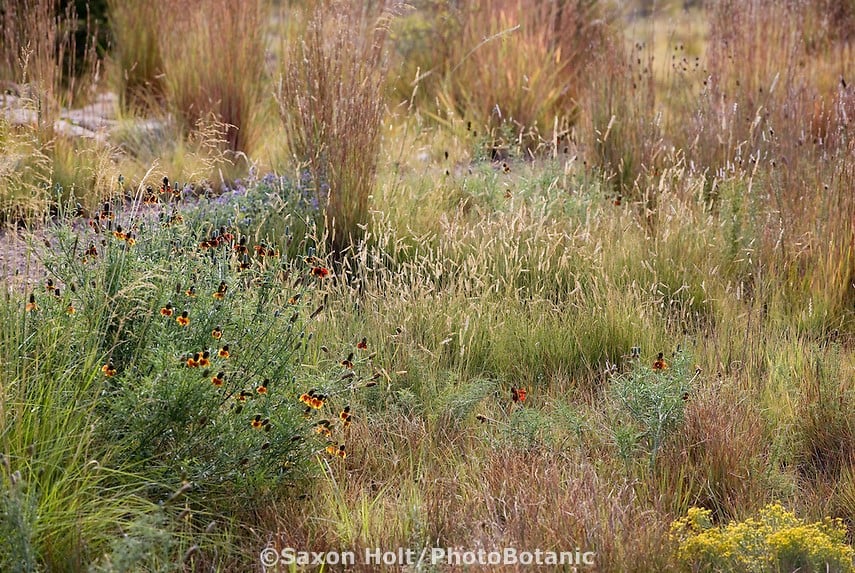
Regenerative or Organic Agriculture?
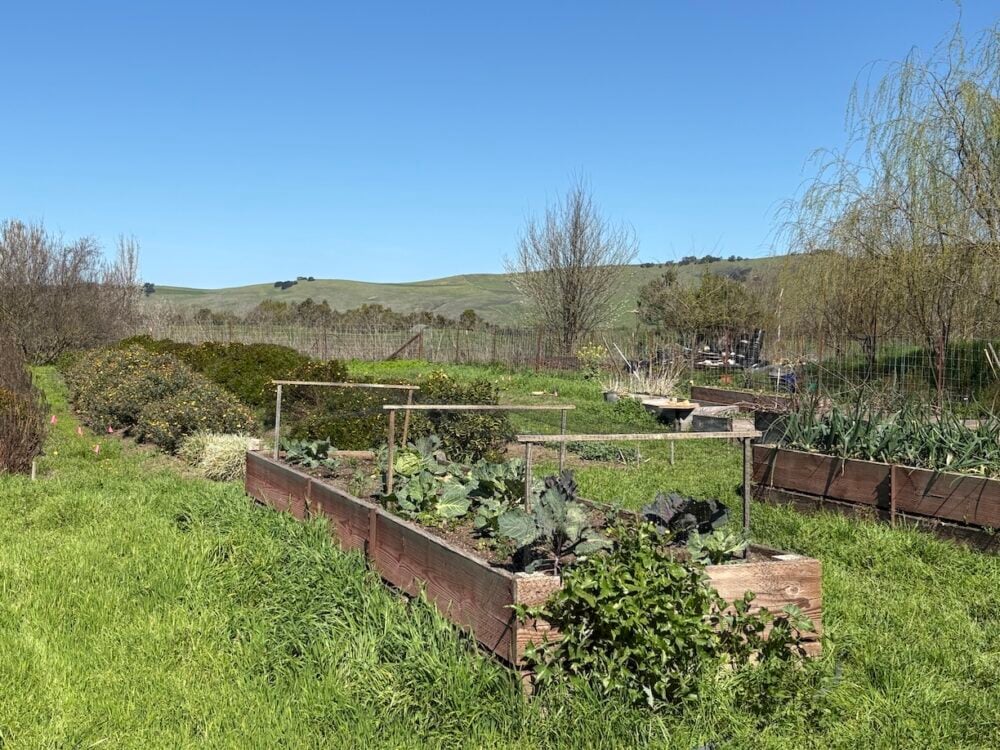
Contributor
- Topics: Sustainable Gardening
Header Image: A private staff vegetable garden at Grgich Hills Estate set amongst the vineyards. Credit: Alison Williams
Summer 2025
Note from the Editor:
While we at Pacific Horticulture have been focused on horticulture for over 50 years, the causes we endeavor to support also touch other related fields. We work to be supportive of the environment, people, wildlife, and biodiversity while we tackle problems like climate change, drought, and fire. We aim to garden sustainably with the understanding that our efforts, in aggregate, benefit us all.
Adjacent to these efforts, agriculture—with its production-oriented crops—is a larger-scale practice involving both the cultivation of plants and the care of animals. When managed sustainably, these larger agricultural sites can deliver the same environmental benefits as horticultural endeavors.
Both horticulture and agriculture have the opportunity to foster soil health, keep our air and water clean, reduce or eliminate contaminants, support wildlife through protecting and supplementing habitat, and even work to mitigate climate change by stewarding our spaces skillfully and thoughtfully. In this editor’s opinion, this is not a mere opportunity for both practices, but horticulture and agriculture share these positive impacts as a responsibility, too, because how we treat the environment through our properties impacts everyone’s lives.
With that in mind, we accepted this piece discussing regenerative agriculture and we hope that our readers will recognize the parallels between what some vineyards are doing and find reassurance that we’re not in this alone.
Regenerative Agriculture - What to Know
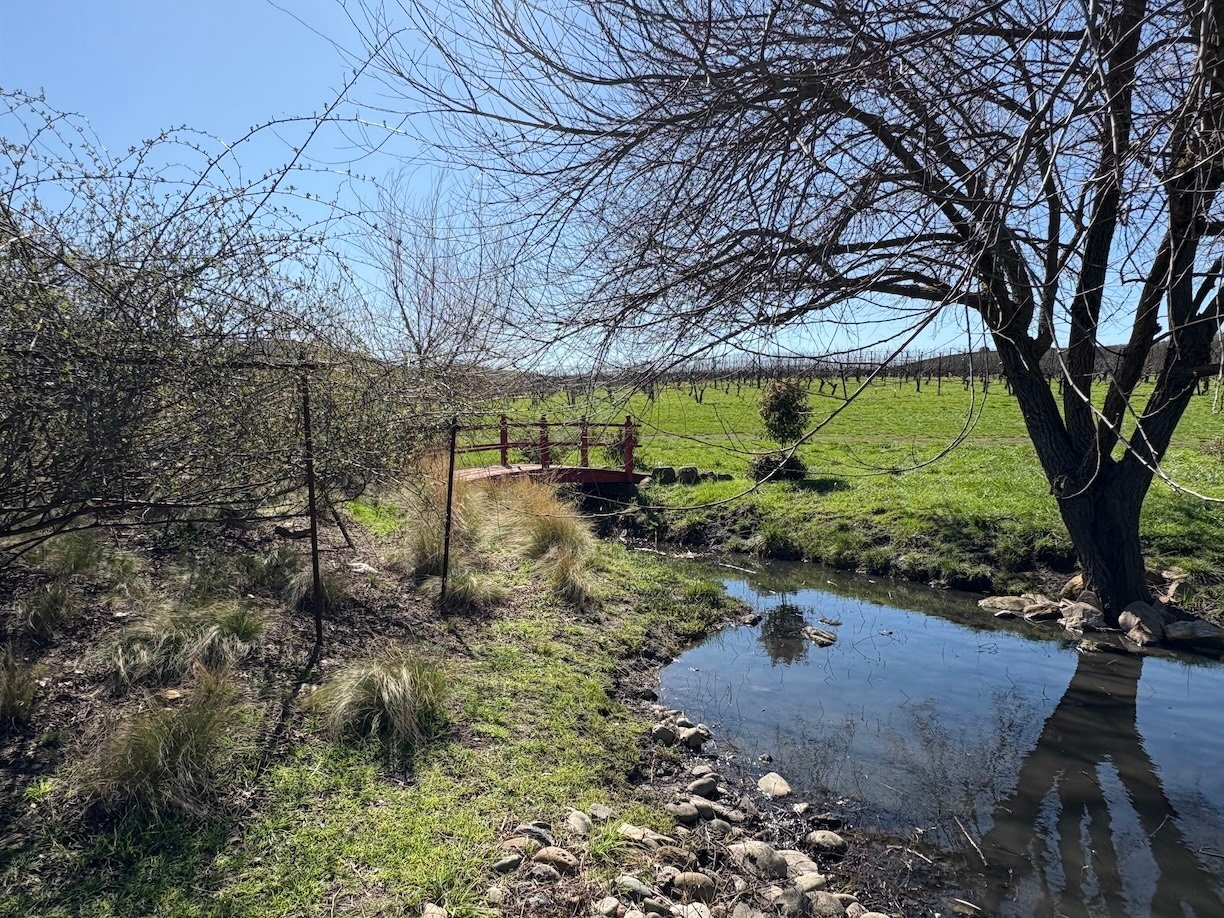
Regenerative gardening has become a buzzword in horticulture, but at its core, it’s about going back to basics. By being mindful of our tactics—including limiting tilling, using cover crops, and increasing biodiversity—we improve soil health, enhance food quality, and support carbon sequestration. This isn’t a new idea; it’s a return to the way growing was done for generations.
Over the past century, modern technology has transformed farming into large-scale monoculture operations. We’ve become increasingly reliant on pesticides, heavy tilling, and synthetic fertilizers for the short-lived efficiency of what we refer to as traditional agriculture. While this approach maximizes yields in the short-term, it depletes soil health, introduces chemicals into our food and waterways, devastates pollinator populations, and contributes to global greenhouse gas emissions (how much varies by source).
With climate change affecting us all, some farmers are going beyond both traditional and organic agricultural practices. Certified organic farms follow strict federal guidelines that prohibit genetically modified organisms and synthetics (in fertilizers, pesticides, and herbicides) while meeting production needs. While the US Department of Agriculture certifies organic agriculture that follows the rules and uses only approved products, farmers are not required to go above and beyond those rules. The approach is more prescriptive than results oriented. Growing organically is not on its own a perfect system. For example, even organically derived pesticides can be toxic to non-target insects, and USDA organic operations can till soil for weed control and seedbed preparation.
Some farmers are going a step further. They’re embracing regenerative farming, a more holistic and adaptive management approach that recognizes each farm is different and that doing the right thing at the wrong time can backfire. Key principles of regenerative farming include minimizing soil disturbance, maintaining cover on the soil, supporting local ecosystems through biodiverse planting, on-site composting, and managed, integrated livestock grazing. While rototilling is not strictly prohibited, regenerative agriculture encourages alternative practices such as cover crops, mulch, and broadforks to maintain healthy soil at all depths.
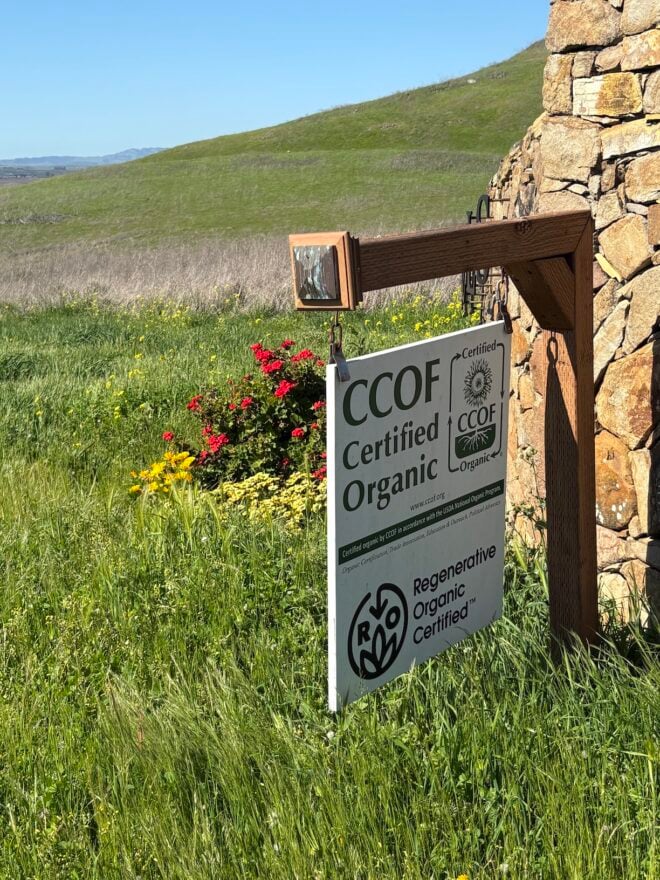
Those of us tending gardens and maintaining nonagricultural landscapes can also apply the same principles to our efforts. We can all find ways to minimize soil disturbance. This leaves the layers of the soil in place and allows soil health to recover more naturally through the activity of soil organisms. Top-dressing with compost instead of tilling or digging it in takes a lot less work and preserves the life in the soil with minimal disturbance. While we wouldn’t expect cattle to show up in suburban backyards, chickens or rabbits could nibble on weeds and leave their droppings behind.
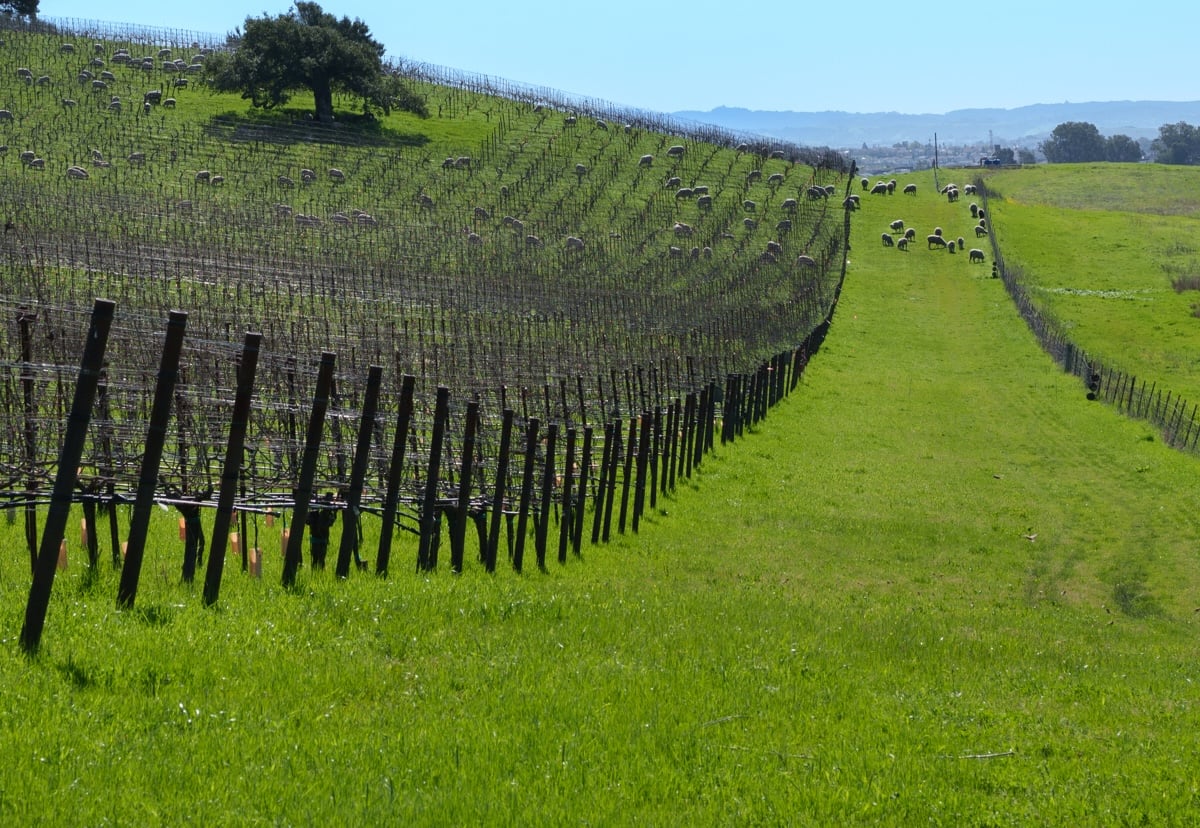
Nowadays, there are a handful of regenerative agriculture and regenerative farming certification programs. In 2017, the nonprofit Rodale Institute, outdoor apparel designer Patagonia and soap producer Dr. Bronner’s founded The Regenerative Organic Alliance (ROA), a nonprofit organization that, among other things, established a certification standard for regenerative farming. According to ROA Founding Executive Director Elizabeth Whitlow, this certification represents “a global farm-based, brand-driven movement to heal our planet.” The Regenerative Organic Certified (ROC) program was the first of its kind, setting a high bar for sustainability. There are other certification programs for regenerative agriculture at both regional and national levels with varying criteria, with more programs on the way. Regenerative certification programs are setting their sights on various plant crops, livestock, and other products.
Regenerative Organic certification was built on the USDA Certified Organic standard, adding criteria that govern soil health, animal welfare, and social fairness for farmworkers (Regenerative Organic Alliance 2023). Farms must meet rigorous criteria and pass annual audits and on-site inspections to maintain their certification. At the time of this writing, the ROA reports impacts to over 19.6 million certified acres, 592 crop types, and 398 farms and ranches. Vineyards make up 38.9 percent of ROC-certified acreage, with the US home to just over half of the 24 certified vineyards.
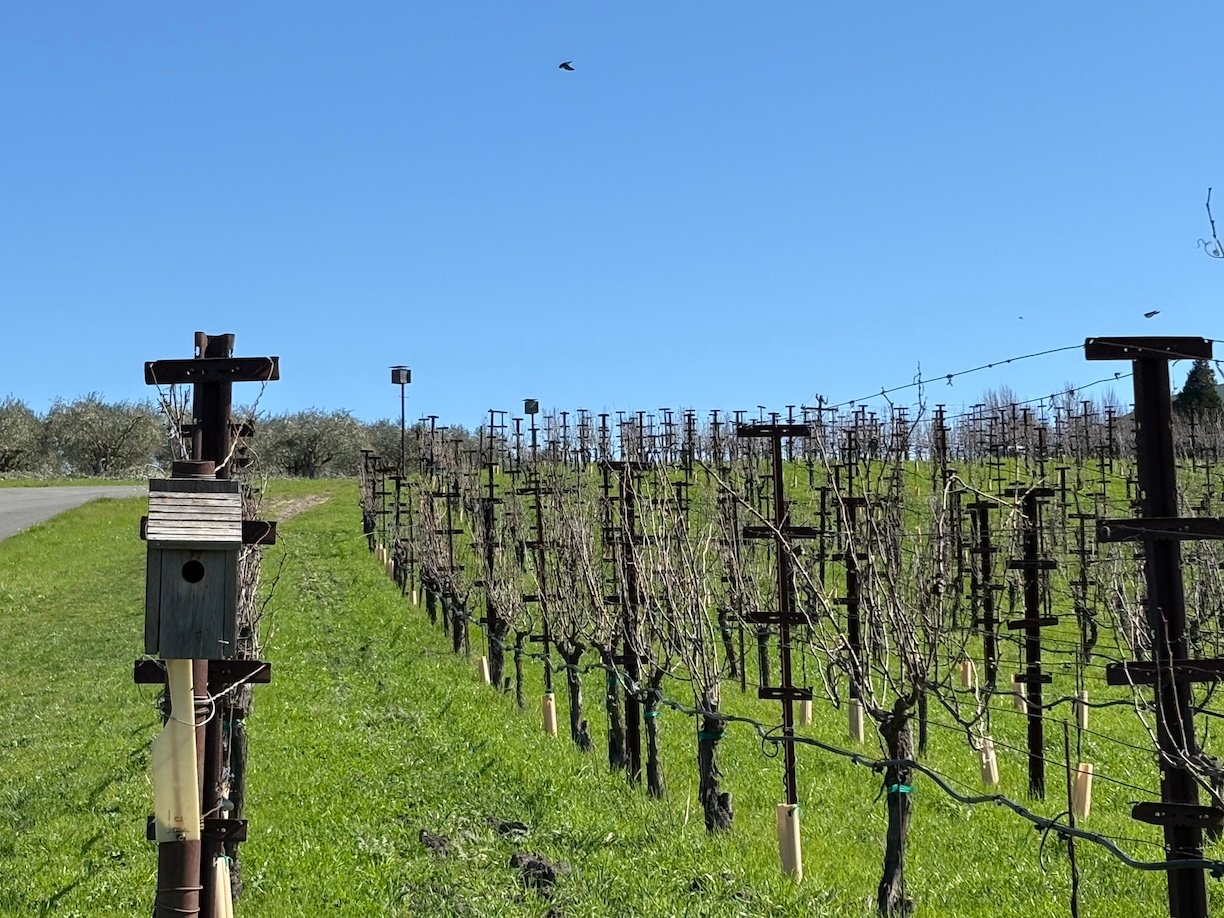
Visiting a regenerative vineyard
During a visit to Grgich Hills Estate’s ROC-certified American Canyon vineyard, I saw firsthand how these principles come to life. Bernat Sort Costa, the head of regenerative organics, led me through the 168-acre estate. At first glance, the vineyard looked like a typical monoculture of grape vines, but as we explored, there were small vegetable and flower plots woven into the landscape, providing food for staff and wildlife. Throughout the vineyard, native plants and apiaries supported pollinators, while a large water catchment system irrigated select areas. Impressively, their sauvignon blanc and riesling vines are dry farmed.
Grgich Hills is also actively restoring native habitats by gradually replacing some vineyard rows with wildlife-supporting plants. By increasing plant diversity, they create a healthier environment for wildlife while enhancing soil resilience. Soil assessments confirm excellent health, with minor adjustments recommended to fine-tune cover crop composition. These cover crops play a crucial role in reducing erosion, improving water retention, and enriching soil fertility. In horticulture, we often forego use of cover crops and miss the benefits they can bring, but finding a locally adapted cover crop for empty areas of our gardens could bring these benefits to any site.
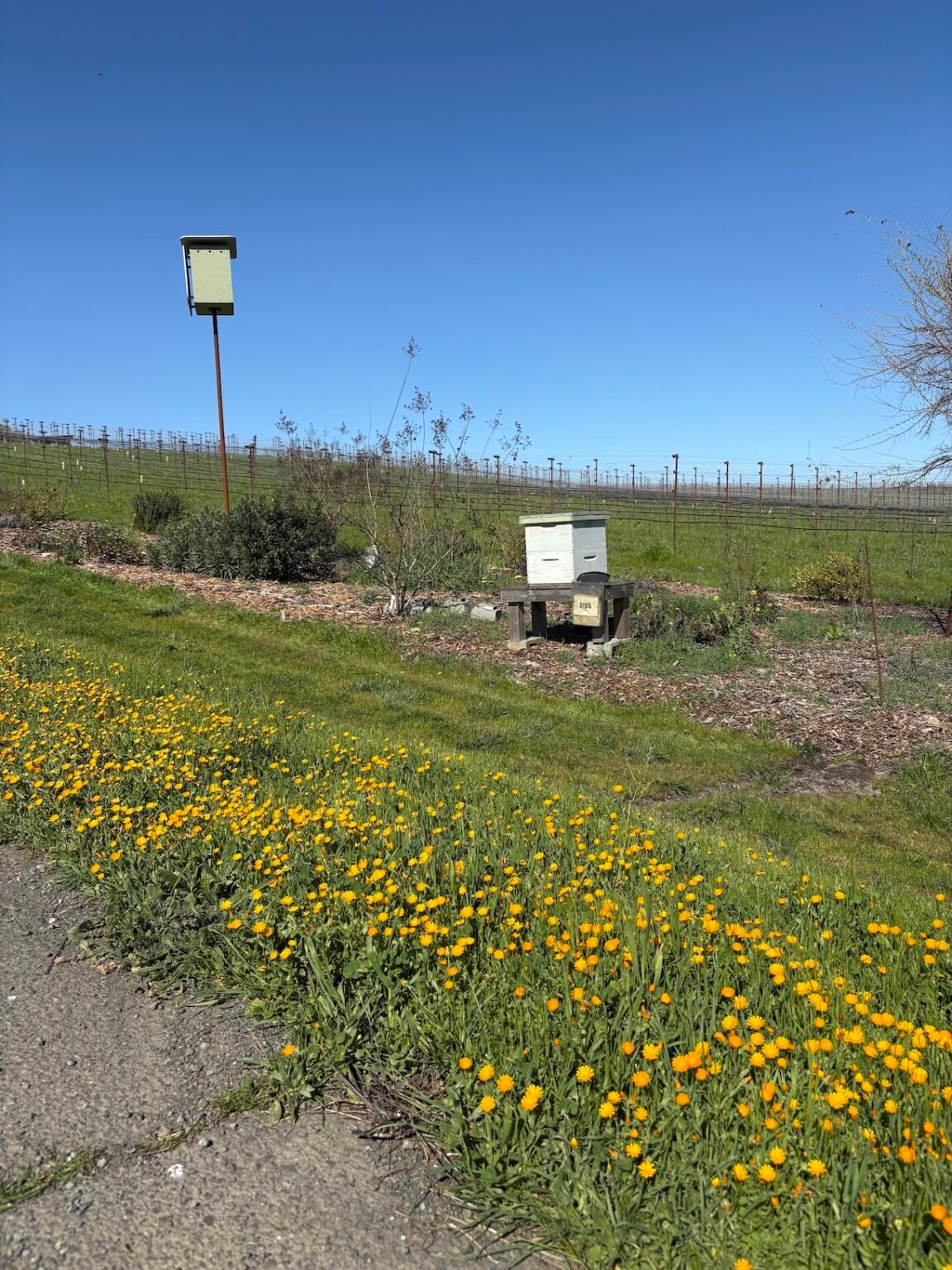
Grgich Hills collaborates with University of California, Davis, to monitor local bird populations, tracking their habits and diet. At the main winery on Highway 29, they are using additional apiaries and ornamental gardens, and also allow sheep grazing between the vines. These natural lawnmowers fertilize the soil as they graze, cycling nutrients back to the soil as they go. There are phone apps that can help you identify what birds, bugs, or other animals you see around you, which is helpful in finding out what those local species need for food, nesting, and host plants.
Because industrial agriculture’s contributions to global greenhouse gas emissions accelerate climate change, we can all make an impact both in our gardening practices and shopping habits. Shop for produce, look for regenerative agriculture certified labels so that you can support the local farms who are implementing these practices, and buy brands that are committed to restoring the planet.
Any landscape can benefit from scaling down the same philosophies as regenerative agriculture. Informed actions can contribute at any scale, whether it’s composting your green waste on-site, increasing biodiversity by planting native species to support your local pollinators and beneficial insects, or avoiding synthetic fertilizers and pesticides.
Garden like the world depends on it, because it does.
Resources
You can find a list of Regenerative Organic Certified companies here.
Pioneer of Regenerative Agriculture
Dowding, Charles. 2022. No Dig: Nurture Your Soil to Grow Better Veg with Low Effort. DK.
Eastbrook, Barry. 2018. “Meet Allan Savory, the Pioneer of Regenerative Agriculture” Successful Farming. March 8, 2018.
Elfali, Iliass. 2023. “Focusing on soil health can help us feed the world’s growing population without harming the planet: Here’s how.” World Economic Forum. November 21, 2023.
Noble Research Institute. 2021. “What Is the Difference Between Organic and Regenerative Agriculture?”
Pacific Horticulture, 2004. “A California Vineyard Garden at the Chelsea Garden Show”
Rebello, Sharrel, Vinod Kumar Nathan, Raveendran Sindhu, Parameswaran Binod, Mukesh Kumar Awasthi, and Ashok Pandey. 2021. “Bioengineered microbes for soil health restoration: present status and future.” Bioengineered 12 (2): 12839–12853.
Organic Trade Association. n.d. “Organic and GMOs.”
Regenerative Organic Alliance. 2023. “Framework for Regenerative Organic Certified.”[pdf]
Singing Frogs Farm. 2021. “Our Farming Model: Basic Principles”
Wozniacka, Gosia. 2019. “With Regenerative Agriculture Booming, the Question of Pesticide Use Looms Large.” Civil Eats. September 5, 2019.


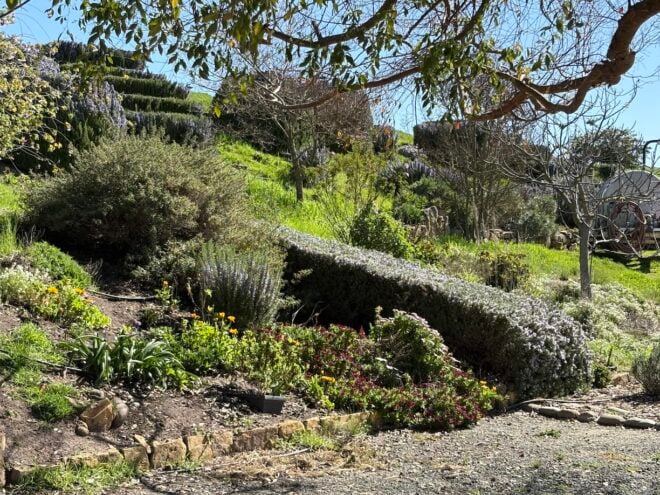
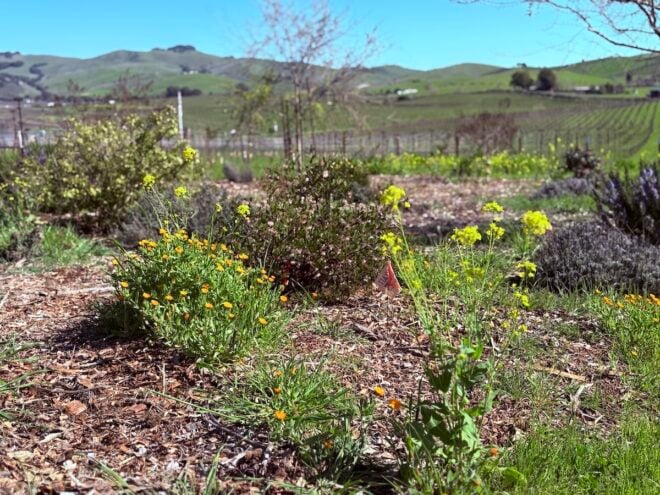






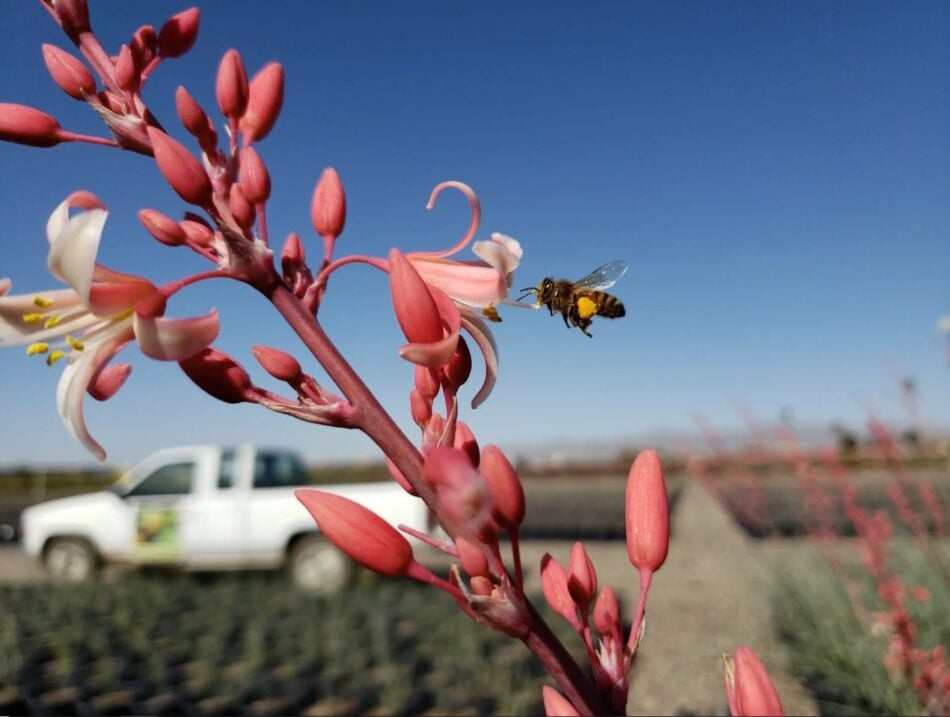


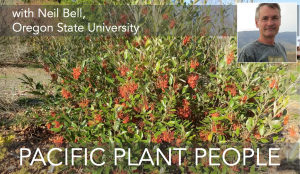
Responses